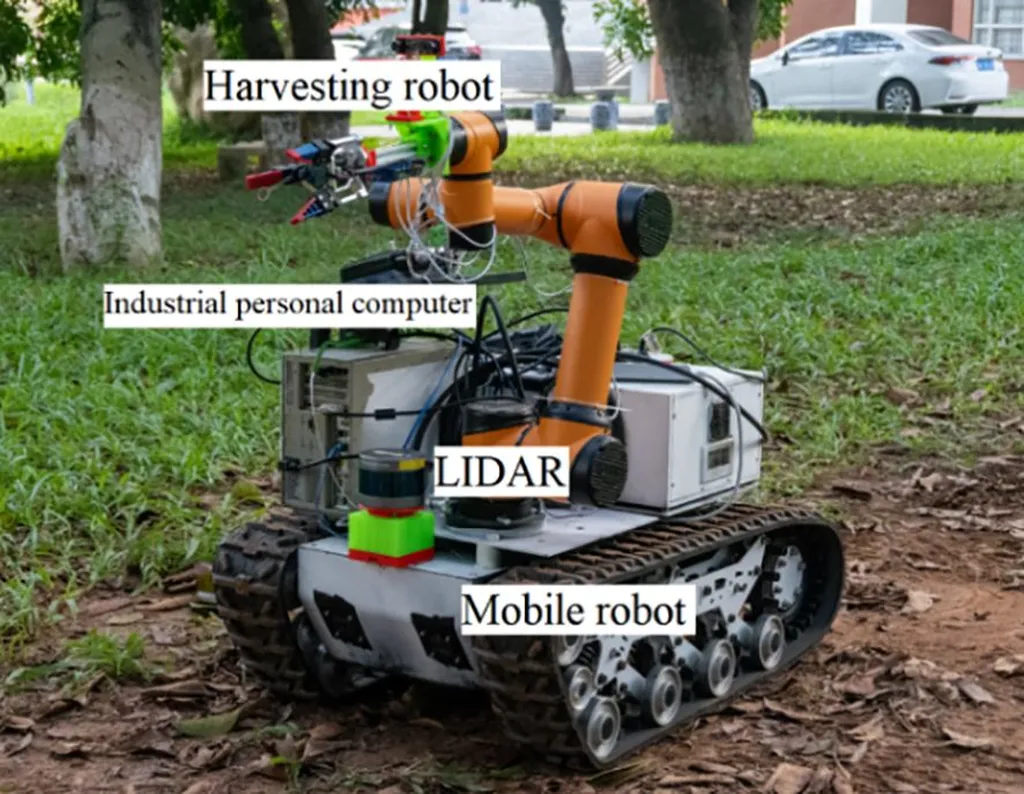In the rapidly evolving world of robotic automation, precision and efficiency are paramount. Researchers have developed a novel algorithm that promises to revolutionize path planning for robotic manipulators, a breakthrough that could significantly impact industries ranging from manufacturing to agriculture. At the heart of this innovation is Hui Liu, a researcher from the School of Electrical and Information Engineering at Jiangsu University in China, who has introduced the Kinematically Smoothed, dynamically Biased Bidirectional Potential-guided RRT* (KSBB-P-RRT*) algorithm.
The Rapidly-exploring Random Tree Star (RRT*) algorithm has long been a staple in robotic path planning, but it has a critical limitation: it doesn’t directly account for motion control, leading to abrupt changes that can cause shocks and vibrations, reducing accuracy and stability. Liu’s research addresses this gap by integrating path planning and motion control into a unified framework. “Our goal was to create a more efficient and smoother path planning algorithm that could handle the complexities of real-world applications,” Liu explains.
The KSBB-P-RRT* algorithm introduces three key innovations. First, it employs a fast path search strategy based on Bi-RRT*, which uses adaptive sampling and steering to accelerate exploration and improve efficiency. Second, it incorporates a triangle-inequality-based optimization to reduce redundant waypoints and lower path cost. Finally, it adapts a Jerk-Continuous S-Curve scheme to generate smooth and executable trajectories, ensuring that the path planning is seamlessly integrated with motion control.
The results of simulations in four different environments are promising. The KSBB-P-RRT* algorithm achieved at least a 30% reduction in planning time and a 3% reduction in path cost, while also requiring fewer iterations compared to the traditional Bi-RRT* algorithm. These improvements make it particularly suitable for complex and precision-demanding applications, such as agricultural robotics.
The implications of this research are far-reaching. In the energy sector, for instance, robotic manipulators are used in tasks such as maintenance and inspection of power plants and wind turbines. The enhanced precision and efficiency offered by the KSBB-P-RRT* algorithm could lead to more reliable and cost-effective operations. “This algorithm has the potential to transform how we approach robotic automation in various industries,” Liu notes.
Published in the journal ‘Sensors’ (translated from Chinese as ‘传感器’), this research opens new avenues for exploration in the field of robotic path planning. As industries continue to embrace automation, the demand for more sophisticated and efficient robotic systems will only grow. The KSBB-P-RRT* algorithm represents a significant step forward in meeting this demand, paving the way for more advanced and reliable robotic applications in the future.
The research not only highlights the importance of integrating path planning with motion control but also underscores the need for continuous innovation in the field of robotics. As Liu and his team continue to refine their algorithm, the potential for its application in various industries becomes even more exciting. This breakthrough is a testament to the power of interdisciplinary research and the endless possibilities it holds for the future of technology.

